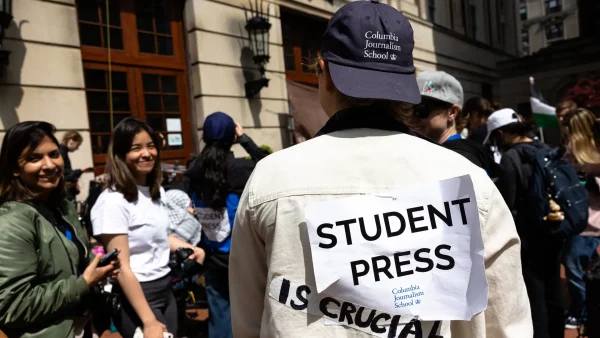Black Hills trip brings a new outlook to the students of All Nations
Students (far right) Minnewa Burris, Clifton Hallow, Joe Sciece, Destin Capers, Daymin Perze-LaRoque, Tyler Bonnete (far left) stand on an outlook of the “The Windows” hiking trail located in the Badlands on their first day in South Dakota. Photo courtesy of Ray Aponte
October 9, 2017
To South High’s All Nations program, connections are everything. And that is exactly what their week long trip to the Black Hills, a significant landmark for the Lakota people, was all about.
Over the course of the last multiple generations, a disconnect between native families and schools has been carried out. “The families are so disconnected from school. And this goes all the way back to boarding school, where the old motto was, “‘save the man; kill the indian,’” said All Nations coordinator Behz Butler.
In the late 70s, Native children were torn from families, and put into boarding schools that had the main focus of exterminating their culture. Despite how different things are today, there are still many side effects of this tragic time in history today. Butler shared that to this day, he is still trying to understand how to properly address an elder, simply because of the distance created during that time period had such a large impact on Native people, and their culture, as a whole.
To the staff involved in the All Nations program, reconnecting families and students to school, as well as native culture is huge. “It’s all about rebuilding our culture. It’s all about rebuilding our way of teaching,” said Butler. Butler explained what a difficult experience high school can be for many native people, and that this this is why a large percent of Native American students will have dropped out by the end of 9th grade. The All Nations program is passionate about keeping students in school, and believe the biggest element in being successful is that connection.
All Nations recently took a week long trip to The Black Hills in hopes of bring together the program’s community. “Going on this trip, they were able to see each other in a different light than the florescent light of this building” said Butler, explaining the significance of taking a large scale trip like they did when trying to bring people together. From September 18th to September 23rd thirty-three students slept outside, climbed mountains, and experienced some of the toughest terrain in the United States in order to get a better understanding of Lakota culture, and to become a more connected community.
While on the trip, the students and staff went to a variety of culturally significant sights. Senior Annyliss Quinde explained that when they stayed in new places they would lay tobacco out as a gift to the Creator, which is what they were taught is the appropriate thing to do in order to show respect while in a new or significant place.
Over the course of the trip new closer relationships seem to have been built. “I can see their small circles became bigger circles” stated Butler, who believes that the experiences the students have now shared were a step in the right direction towards the tight knit and connected community staff believe All Nations can become. “We got to know a lot of younger students,” said senior Leticia Leon.
After taking the trip, many people hoped that students of All Nations, particularly freshman, would have a new outlook on continuing their education. “The freshman that did go, before they were a little shy and just wanted to keep to themselves. Now they’re just open and wanting to hang around others” said said Quinde. “Before the trip they were kind of in and out,” said Butler, who also noticed a connection between the trip and the students school turnaround.
Another element of the trip was using it as an example and learning moment for students. “Each step you take is like everyday day you have to be in school: is another left foot, another right foot. Each assignment is another left foot, another right foot,” Butler told his students. He explained that now that he has the experience of this trip with his students he can refer back to it for motivation. “If you can climb a mountain, you can finish this work sheet,” he said and hopes that students realize it as well.
In terms of succeeding in the goal of connecting students and staff to one another, Butler said that “we did a lot of growth, but we still have a lot of growth to do yet as a program.” He, as well as the other staff involved in All Nations, hope that the relationships and positive outlooks on school continue to be nurtured into the students of All Nations.






